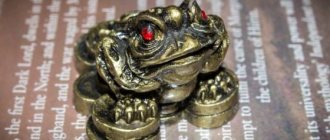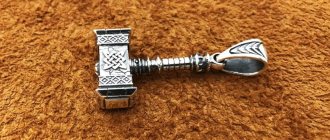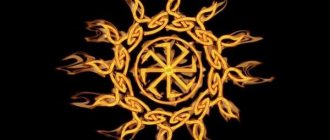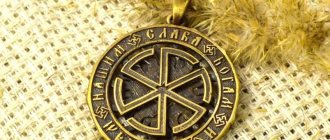- Wild animals
- >>
- Insects
The vast plains of Africa, which are home to many fairly large herbivores, are also home to the scarab beetle . Probably Africa, and the whole planet, has not yet been mired in huge piles of dung thanks to dung beetles, among which scarab beetles have the most honorable place.
Origin of the species and description
Photo: Scarab beetle
Entomologists classify the scarab beetle as belonging to the genus Scarabaeidae, the class Insectae, the order Coleoptera, and the family Lamelidae. This family is characterized by a special shape of the mustache, which can periodically open in the form of a fan consisting of thin movable plates.
Video: Scarab beetle
Currently, science knows more than a hundred representatives of this genus, which usually live in dry steppes, deserts, semi-deserts, and savannas. Most species of scarabs can only be found in the tropical zone of the African continent. The region called the Palaearctic, spanning northern Africa, Europe and northern Asia, is home to approximately 20 species.
The body length of scarab beetles can vary between 9-40 mm. Most of them have a matte black color of the chitinous layer, which becomes more shiny as they mature. Sometimes you can find insects with chitin of a silver-metallic color, but this is very rare. Males differ from females not in color and size, but in their hind legs, which are covered on the inside with golden fringe.
All scarab beetles are very characterized by vegetation on the legs and abdomen, as well as the presence of four teeth on the front pair of legs, which are involved in digging and forming balls of dung.
Choosing a location for application
The scarab beetle, the tattoo of which many mystics consider an amulet, is popular among fans of permanent designs of the 21st century. Those who want to get such a picture choose different parts of the body to apply it, and the picture can be either very small, consisting only of a beetle, or large, for example, on the entire back, including additional elements.
Apply an image of a sun beetle to:
- wrist;
- shoulder;
- neck;
- breast;
- stomach;
- back;
- shin.
Each of the listed places has its own sacred meaning in the world of tattoos. Therefore, before choosing a part of the body for drawing, you need to understand and feel its energy.
Wrist
The Scarab Beetle tattoo can be placed on the wrist. In this case, the picture activates a person’s creative abilities and stimulates his imagination and desire to become famous.
For those who have chosen a sun beetle as a permanent design, you can add to it some other symbols of what the wearer plans to do and develop. The energy of the daylight in this case will help overcome obstacles and fill everything made by hand with positive energy.
Shoulder
Eastern sages believe that a tattoo applied to the shoulder will allow the owner to make his way in life and achieve success in all chosen areas of activity. According to the teachings of Feng Shui, this part of the body, as well as the shoulder blade, is responsible for the Li side of the world, associated with the southern hemisphere of the Earth and the Sun.
The scarab beetle, as a symbol of the daylight, is suitable for applying to the shoulders. In this case, a tattoo will help realize all your ideas and contribute to the rapid restoration of strength for further work.
Neck
The cardinal directions Qian and Dui are responsible for this part of the human body. Those who choose to tattoo their neck want to comprehend secret knowledge. Eastern sages note that the permanent picture here should be in silver and gold tones. Those who have chosen a scarab to decorate this part of the body must, when painting the beetle, focus on the listed colors.
For those who decide to put a sun beetle behind their ear, the Egyptian talisman will allow them to hear more pleasant words addressed to them. A tattoo on this place brings peace, happiness and tranquility into the life of the owner.
Breast
Men have a sun beetle tattoo on their chest, while women prefer to place it on their rib cage. According to the Eastern teachings of harmony, Li is also responsible for this part of the body.
The scarab on the chest symbolizes openness to the Sun and life. The tattoo also indicates that a person faces everything that happens in life with a clear gaze, without turning away. Large insects are usually painted on the chest, which makes them look like a shield or armor.
Stomach
The eastern direction Kun is responsible for permanent pictures on the stomach. The part of the body between the ribs, going down to the genitals, is associated with procreation, a strong family and romantic relationships.
Those who want to make a sun beetle on their belly need to paint it in warm yellow tones. It is recommended to get a tattoo in this place if you have problems in your personal life or have been unable to conceive a child for a long time.
Back
The scarab beetle, the tattoo of which is often placed on the back of men, has, according to the Eastern teachings of harmony, 2 zones of influence. From the shoulders to the lower back there is the Zhen zone, where it is recommended to make drawings with a predominance of dark green and brown, and Kan, from the lower back and below, where the pictures should be in blue and black tones.
A scarab in the Zhen zone will help the owner create a family or improve relationships within it and improve their health, including getting rid of bad habits. Located in the Kan zone, the beetle activates growth in the professional field.
Leg
According to Feng Shui, feet are responsible for a person's sexual energy. By placing a tattoo on this part of the body, for which Xun is responsible, a person activates prosperity and well-being in his life.
Having decided to draw a scarab in any part of the leg, it is necessary that the beetle be more of a green shade. It is noteworthy that permanent pictures of the fairer sex are most often placed on the lower extremities.
Appearance and features
Photo: What a scarab beetle looks like
The body of the scarab beetle has the appearance of a wide, slightly convex oval, completely covered with an exoskeleton. The exoskeleton is a very hard and durable chitinous cover, usually acting as so-called armor that protects the beetle’s body from injuries associated with its type of activity. The head of the scarab beetle is short and wide with six teeth at the front.
The pronotum of the insect is also wide and short, flat, quite simple in shape, has a granular structure and a large number of small lateral teeth. The insect's hard chitinous elytra are more than twice as long as the pronotum, have six longitudinal shallow grooves, and the same uneven granular structure.
The posterior section of the abdomen is bordered by small teeth and covered with sparse vegetation in the form of dark hairs. The same hairs are present on all three pairs of legs. The front legs serve the beetles for digging soil and manure. Compared to other paws, they look coarser, more powerful, massive and are equipped with four outer teeth, some of which have many very small teeth at their base. The middle and hind legs appear longer, thinner, curved and help the insects form balls of dung and also carry them to their destination.
Interesting fact: Dung balls formed by scarab beetles can be tens of times larger than the size of insects.
Which amulet to choose
Regardless of which amulet you want to choose, its power will not just start working. This issue should be approached very responsibly. For the amulet to work, it must be selected individually, based not only on the appearance of the talisman, but also on the person to whom it will belong. Therefore, when choosing, be guided by the following rules:
- Firstly, you need to have a clear understanding of what you want from the amulet, what function it should perform when you wear it. Thus, you initially saturate yourself with this energy, which will subsequently be transferred to the amulet and it will begin to act.
- It is advisable not to buy them with various inscriptions, even on the reverse side. This can make the amulet's power much weaker. So, for example, if it says “for your health”, and you initially set yourself up for the purchase in order to attract money, its effect will be distorted.
Video about the sacred scarab beetle
Where does the scarab beetle live?
Photo: Scarab beetle in Egypt
It is traditionally believed that scarab beetles live in Egypt, where they have long been revered and almost worshiped, but the habitat of the insects is much wider. The scarab is found almost throughout Africa, in Europe (western and southern parts of the continent, southern Russia, Dagestan, Georgia, France, Greece, Turkey), in Asia and even on the Crimean Peninsula.
In general, it turns out that scarab beetles prefer a warm or hot climate with short and mild winters, which is typical for the above regions, as well as the coasts of the Black and Mediterranean Seas. Beetles prefer to live on sandy soils in savannas, dry steppes, deserts and semi-deserts, while they try to avoid saline areas.
It is interesting that beetles live on the Crimean peninsula, but probably, due to the salinity of large areas of the region, they are much smaller in size than their Egyptian relatives.
Interesting fact: More than 20 years ago, entomologists tried to detect traces of scarabs in Australia, but these attempts were unsuccessful. Apparently on this continent Mother Nature never had a need for orderlies. And no wonder, Australia has always been famous not for the abundance of wildlife, but for its unusualness, especially since its entire central part is a dry desert sparsely populated by animals.
Now you know where the scarab beetle is found. Let's see what he eats.
The scarab is a sacred symbol with a thousand-year history.
Scarab in ancient Egyptian is “khepri” . The name Khepri was borne by the ancient Egyptian god of the rising sun, the creator of the world and man, who was depicted in the form of a scarab or as a man with the head of a scarab. Why did the scarab beetle become a symbol and personification of the Egyptian solar deity?
Who is he - the sacred scarab?
Scarab beetles (lat. Scarabaeus sacer) are often found on the coasts of the Mediterranean and Black Seas, in Southern and Eastern Europe, on the Arabian Peninsula, in Crimea, Turkey and, of course, in Egypt.
The scarab is a matte black insect with a round, smooth body 25–35 mm long. Old scarabs turn shiny black. On the head of the beetle there is a frontal protrusion and eyes, divided into upper and lower parts. Each leg of the scarab has spurs with which it digs into the ground. Their gender differences are weakly expressed. The lower part of the body is covered with dark brown hairs. Scarabs live for about two years; they spend almost their entire lives underground, emerging to the surface at night. Scarabs overwinter, burrowing into the ground to a depth of 2 meters. The flight of beetles from the ground to the surface begins in March and lasts until mid-July.
The main feature of beetles is their feeding method. Scarabs are dung beetles and feed on the dung of cattle - cows, horses, sheep.
The ancient Egyptians noticed the unusual behavior of scarabs: as soon as a herd of horses or a herd of cows passed along the road, leaving behind heaps of manure, a whole swarm of black scarab beetles immediately flew there. Each of them begins to diligently make balls of dung, rolling them along the road, gradually turning them into an almost ideal sphere, often exceeding the size and weight of the scarab itself, and bury the dung ball in the ground, then use it as food and as a nutrient medium for offspring.
Pairs of scarabs are formed during the process of preparing dung balls. The “Sisyphean labor” of the male scarab attracts the female and they jointly look for a suitable place, dig a hole in the ground 15–30 cm deep. After mating, the male leaves, and the female begins to roll pear-shaped balls, lays eggs in this nutrient medium, and fills the hole with earth , pouring a “pyramid” on top.
After 1–2 weeks, the beetle larvae hatch. For a month, the scarab's offspring eat the food that their parents have prepared for them, and then the larvae degenerate into pupae . In unfavorable weather, the pupae remain in the burrow for the winter. In spring, young beetles leave their burrows and come to the surface. The scarab appears underground to live on the ground and in the air - after all, these beetles fly perfectly!
This unique scarab beetle, widespread in Western Europe, North Africa and Central Asia, has become an ancient magical symbol in religion not only for the Egyptians. The scarab was “deified” by many African tribes and the ancient peoples of the Caucasus. However, it was in Ancient Egypt that the cult of the scarab acquired a truly epic scale.
Where do the ancient Egyptian myths about scarabs come from?
The scarab beetle became a sacred symbol in ancient Egypt around the 3rd millennium BC.
A researcher of ancient petroglyphs in the Maharashtra region of India, scientist Bibhu Dev Misra discovered a unique scarab petroglyph created around 7000 BC. Mr. Misra claims that the ancient petroglyph predates the earliest dates of ancient Egyptian civilization by about four thousand years.
goddess Hat-hor = “House-Mountain” - great mother -3400-2920. BC.
The sign of the Scarab represents Sirius, in the constellation Canis Major, which is a classic winter constellation for the northern hemisphere. The goddess Hat-hor (“house of Horus,” i.e., “sky”) , who was depicted as a cow with Sirius between her horns, was associated with Sirius. The Mystery of the Swan and the North Star Deneb.
Bibhu Dev Misra in his article writes that the petroglyphs he found indicate a more ancient system of astrological ideas about the celestial sphere and dates the appearance of constellation symbols to a period of about 10,000 BC. Perhaps our astrological knowledge is the legacy of a lost civilization that flourished during the Ice Age.
Mr. Misra suggests that the ancient petroglyphs may reflect “esoteric knowledge about the ancient civilizations of the “Golden Age” of humanity, which perished during the cataclysms of the Younger Dryas era (10,900 BC - 9,700 BC) , when our planet was hit by numerous fragments of a giant comet.
Ancient petroglyphs recently discovered in Maharashtra likely indicate the existence of some extremely ancient forgotten culture, predating by thousands of years any traditional civilization known in history, whose symbolism is reflected in the sacred myths and scriptures of later cultures and civilizations around the world.
“Scarab” is a symbol of the movement of the sun, its creative and life-giving power.
While observing scarabs, the Egyptians noticed an interesting feature - the beetles always roll their balls from east to west, and fly only at noon. Attentive Egyptians saw in this a connection between beetles and the sun. The sun travels its way from east to west and disappears behind the horizon, only to appear in the east again tomorrow.
According to the ideas of the ancient Egyptians, the sun was a deity who brought life to all living things and resurrection after death. The Egyptians correlated the development cycle of the scarab inside a ball of dung and its release to the surface of the earth in the spring with the movement of the sun.
The similarity struck the ancient Egyptians so much that they began to personify the rising sun with the god Khepri (Khepera, Haper) , depicting him with a scarab instead of a head.
Personifying the rising morning sun with the god Khepri (hpr - “emerged”, from hpr - “to arise, to occur”), the Egyptians worshiped the god Ra (ancient Egyptian: ri-a; Copt.: Re (reɪ) or Rē) - the god of the day the sun and the god Atum (Egyptian - tm) - the evening, setting sun.
Khepri partially took over the functions of the god of the solar disk Aten. Khepri was identified with Atum, Pa (Ra-Khepri) , Amon (Amon-Khepri).
Atum-Khepri in the Pyramid Texts is named the creator of Osiris (Egyptian jst jrt, Usir) - the god of rebirth, king of the underworld and judge of the souls of the departed.
It was believed that Khepri arose from himself (“he arose in his name”), sometimes his father is called the “father of the gods” Nun (Ancient Egyptian “nwn” [Naun] - “water”, “aquatic”). In ancient Egyptian mythology, the father of the gods Nun existed at the beginning of time, as the primordial ocean from which Ra emerged and began the creation of the world Atum.
The meaning of the sacred symbol of the scarab has probably not changed over thousands of years, because archaeologists have found scarabs, rings and amulets in various cultural layers of excavations. The scarab was often combined with other sacred images. For example, in the Cairo Museum you can see many ankhs, which, among other symbols, depict sacred scarabs.
The scarab became in Egypt a symbol of the hard-working student on his path to wisdom. Just as the scarab persistently and persistently transforms the shapeless, viscous mass of dung into a ball in order to plant the seeds of life in it, so the disciple walking along the Path of Wisdom must transform the shapeless mass of his shortcomings into the ideal, perfect form of a ball, like the sun's disk disappearing beyond the horizon of the earth and newly born in the east.
Even from the deepest underground darkness, where the scarab leaves a clutch, its offspring are born again, awakening and resurrecting, like divine power and wisdom, giving the newly born Soul the opportunity to fly away to a new life on earth.
Next to the scarab are depicted two serpents of wisdom, right and left, the student takes from each of them and forms his own wisdom.
The most valuable, ancient and revered scarab figure can be found in the Karnak Temple, which is located near Luxor. In Luxor there is a statue of a sacred scarab; this place is especially revered by local residents.
Scarabs appeared in the painting of funerary sarcophagi around 1000 BC. Scarabs were often depicted rolling a fiery ball of the sun, a symbol of the cyclical nature of the universe and eternal life. Dried scarab beetles were often placed in faience pylons, which apparently served as original funerary decorations , which were considered amulets guaranteeing resurrection from the dead.
The role of the scarab in the life of Ancient Egypt.
The Egyptians had poetic religious texts that called the scarab the god that lives in the heart and protects the inner light of a person. The sacred symbol of the scarab gradually became a link between the divine principle and the human soul.
There are many spells associated with the scarab beetle, preserved in the Sarcophagus Texts and the Pyramid Texts. It is known that the Egyptians performed many magical rituals associated with the scarab.
The symbol of the sacred scarab accompanied the ancient Egyptians all their lives and passed with them into the afterlife. If the body was mummified after death, like a scarab pupa, then instead of the heart, an image of a sacred beetle was inserted. Without it, the resurrection of the soul in the afterlife could not occur. The ancient Egyptians understood the importance of the heart in the human body and, by placing an image of a sacred beetle in its place, they believed that it represented the primary impulse for the rebirth of the soul. Somewhat later, instead of a figurine of a scarab beetle, the Egyptians made a heart from ceramics, and the names of the gods were depicted next to the symbol of the sacred beetle.
This scarab was found in the tomb of Pharaoh Tutankhamun (1340-1331 BC), discovered by Howard Carter in November 1922. Pharaoh Tutankhamun died at the age of 19, his mummy in a golden sarcophagus and mask was placed in 2 wooden coffins. Another 3 sarcophagi of Tutankhamun were made of quartzite, covered with red granite. Around the sarcophagus there were four golden wooden chapels that occupied the entire room.
This amulet, decorated with the symbol of the sun god - an oval yellow stone, interested scientists from the Milan Natural History Museum. Researchers saw in this stone the key to solving one of the mysteries of the Sahara Desert.
The yellow stone, which Howard Carter, the discoverer of Tutankhamun's tomb, considered to be semi-precious chalcedony, in fact turned out to be natural glass with extraordinary properties - it begins to melt at 1700 degrees Celsius, which is 500 degrees higher than the melting point of other samples of natural glass. It turns out that whole placers of such glass were found in the Egyptian Sahara, from small pieces to blocks weighing 26 kilograms.
If this special glass is red hot and thrown into cold water, it will not crack. That is, in terms of its characteristics, this natural silicate glass is superior to many modern high-tech glasses.
This unusual natural glass was encountered back in the 30s of the last century by expeditions traveling around the Sahara in search of treasures of ancient civilizations and lost cities. According to experts, more than 1,400 tons of this pure yellow-green glass are scattered in the Saad plateau area alone. Some of the natural glass samples found have swirling black patterns. The high content of iridium in glass indicates their extraterrestrial origin. Iridium is found in some meteorites and comets. Scientists have hypothesized that in ancient times a large meteorite similar to Tunguska exploded over the Sahara. At the same time, the high temperature caused the silicate-rich sands of the Sahara to melt and turn into glass.
This space meteorite glass has been used by people for a long time. Explorers of the Sahara Desert often find knives, hatchets, and arrowheads made from this material almost 100 thousand years ago.
Before the discovery of the scarab in the tomb of Pharaoh Tutankhamun, no one suspected that the ancient Egyptians knew about the extraordinary glass of the great sandy sea, many kilometers from the nearest habitation. The scarab remains the only silicate glass jewel discovered among the treasures of Ancient Egypt.
What do amulets with a scarab mean in our time?
At all times, people believed in the miraculous power of various amulets that brought good luck, wealth, and happiness. Egyptian talismans among them are considered the most powerful, but safe for humans.
The scarab beetle talisman is one of the most revered. The scarab is considered a symbol of life, keeping its owner youthful and beautiful.
Initially, amulets were made from stones, both precious and ornamental. Green granite, marble, basalt or ceramics were used, which, after drying, were covered with green or blue azure. Now tourists are offered metal amulets decorated with stones.
Anacharsis "On the exercise of the body."
Egyptian priestess Meretitis and singer Kahai
What does the scarab beetle eat?
Photo: Scarab beetle in nature
Scarab beetles feed on fresh mammalian dung, which is why they have fully earned the status of natural orderlies or recyclers. As a result of observations, it was noticed that 3-4 thousand beetles can fly to one small pile of manure. The manure should be fresh, because this makes it easier to form balls from it. Beetles make dung balls in a rather interesting way: with the help of teeth on the head and front legs, which rake like a shovel. When forming a ball, a small piece of round-shaped manure is taken as a basis. Having settled on top of this piece, the beetle often turns in different directions, separates the manure surrounding it with the jagged edge of its head, and at the same time, its front paws pick up this manure, bring it to the ball and press it into it from different sides until it acquires the desired shape and size .
Insects hide the formed balls in shaded nooks and, in search of a suitable place, are able to roll them several tens of meters, and the further the beetle moves away from the heap, the faster it needs to roll its prey. If the scarab suddenly becomes distracted, even for a short time, the ball can be brazenly taken away by its more nimble relatives. It often happens that a fierce fight takes place over dung balls, and there are always more contenders for them than there are owners.
Having found a suitable place, the beetle digs a fairly deep hole under the ball, rolls it there, buries it and lives next to its prey until it completely eats it. As a rule, this takes a couple of weeks, or even more. When the food runs out, the beetle goes back in search of food and everything starts all over again.
Interesting fact: It has been scientifically proven that the carnivorous species of scarab beetles does not exist in nature.
Why do you dream about a scarab?
Dreams often prompt a person to solve a problem or warn of danger. Of course, a sacred insect in a dream carries a certain meaning that is important to interpret correctly. To understand why the scarab beetle dreams, you should remember all the details of the dream and refer to several dream books:
— Miller’s Dream Book: the scarab makes it clear that success can only be achieved if you devote yourself to the task with your head and make efforts to complete the task;
— Gypsy dream book: an insect promises good luck and approves of the path chosen by the dreamer, but only if you dreamed of a flying scarab;
— Eastern dream book: if the beetle was in the mouth, the dream should be interpreted as a warning about imprudence and careless words. You should think before making fiery speeches, because they can lead to undesirable consequences;
— Aesop’s dream book: finding a scarab in your own bed means that you will soon find a soul mate;
— Assyrian dream book: if a beetle from a dream bites, this can be regarded as a warning about the hidden influence of other people on the dreamer’s fate. If the bite passes without a trace, there is nothing to be afraid of; if an abscess is seen in its place, the actions of the enemies will bring them the desired result;
— Noble dream book: a large scarab promises unpleasant secrets around the person who dreamed about it. They will bring with them a threat to well-being and negatively affect relationships with loved ones;
— Modern dream book: A scarab beetle seen in a young girl’s dream promises a quick marriage, but if the insect crawled away, the marriage will not last long.
If in a dream the scarab was not just static, but moved or interacted with the dreamer in some way, this leaves an imprint on the interpretation of the dream:
- an insect covered in amber means that you will soon have to take on the burden of responsibility for the fate of another person;
- a precious decoration in the form of a scarab symbolizes unexpected wealth - winning a lottery, inheritance or bonus;
- the image of a beetle on household items promises the dreamer harmony in family life and improved relationships with children and spouse;
- a feeling of disgust in a dream towards a scarab or its specific food indicates that in reality unpleasant rumors are being spread about the dreamer, which can ruin relationships with loved ones;
— a dung beetle in a plate warns against concluding important transactions, especially with unverified people: there is a high probability of losing money;
- if the scarab crossed the road or was simply on the way, there will be a meeting that will affect the dreamer’s fate.
The scarab, despite its frightening appearance and gloomy color, does not promise major troubles or health problems in a dream. Unlike many other insects, it becomes a harbinger of success, provided that effort is invested in achieving it.
Features of character and lifestyle
Photo: Large scarab beetle
The scarab beetle is considered the strongest and hardest working insect, capable of moving 90 times its own weight. He has a unique natural skill - he creates an almost regular geometric figure - a sphere - from manure. You can see the scarab in its habitat from mid-March to October. The beetles are active during the day, and at night, if it is not too warm, they burrow into the ground. When it gets too hot during the day, insects begin to become nocturnal.
Beetles fly very well, so when they gather in large flocks, they wander around the surrounding area following herds of large herbivores. Scarabs can smell the smell of fresh manure from several kilometers away. The scarab was nicknamed the orderly of sandy soil for a reason, because almost its entire life is connected with manure. Several thousand beetles are able to process a pile of animal waste in no more than an hour, before it has time to dry out.
The dung balls are rolled by the beetles at a distance of several tens of meters from the heap into a shaded place, where they are then buried in the ground and eaten within a couple of weeks. Quite often, fierce fights arise between beetles over ready-made dung balls. As the balls roll, “family” pairs are formed. In temperate climates, where winters are cold, scarab beetles do not hibernate, but wait out the frosts, making reserves in advance, hiding in deep burrows and remaining active.
Benefits and harms for humans
The scarab beetle is not dangerous to humans: it will not attack or spoil food supplies or plants. On the contrary, by recycling organic residues, it helps enrich the soil with minerals and prevents the development of parasites in them, not to mention the specific smell of manure.
The tunnels that the insect prepares for its offspring become a kind of lungs for the soil, providing oxygen access to the roots of plants. For the Egyptians, the scarab beetle is a symbol that maintains the connection between the Sun God and people. It is believed that the insect accompanies a person in earthly and afterlife, signifying sunlight in the heart.
While the Egyptian is alive, the Sacred Scarab attracts good luck, gives longevity and prosperity, protects against evil spirits and brings a good harvest. After death, the insect helps to find a new life, since the religion of the Egyptians is based on the immortality of the soul. Even today, especially religious residents of Egypt place a figurine of a scarab made of ceramic, metal or glass into the burial.
In ancient times, the people of the banks of the Nile had a tradition of mummifying noble persons, then in place of the extracted heart they put a small scarab made of precious metal and decorated with stones. The tradition is associated with the understanding that the heart is the main organ of human life, therefore the ancient scarab beetle was called upon to help the germ of a new life.
Modern Egyptians, with the development of science and medicine, began to regard death as inevitable, but the symbol of the scarab did not disappear from their lives. It is believed that images and figures of a beetle rolling its ball bring good luck to students - after all, the insect creates an ideal geometric shape from waste, while working hard.
It helps creative people achieve their goals, create and turn the simplest things at first glance into works of art. For women, the scarab is the keeper of unfading beauty and longevity, because it was originally considered a symbol of life.
For the stronger sex, it brings recognition from colleagues and high financial inflows. The Egyptians firmly believe that desecration of the symbolism of the scarab by representatives of a different faith entails the wrath of higher powers, up to and including a mortal curse.
Social structure and reproduction
Photo: Egyptian scarab beetle
As such, there is no mating season among scarabs. The beetles mate and lay eggs as long as they are active. Moreover, they find a couple for themselves while working. Scarab beetles live up to about 2 years. Young insects prepare dung balls for their food. Somewhere at 3-4 months of life, males unite with females into “families” and begin to work together, preparing food not only for themselves, but also for future offspring.
First, the insects dig holes up to 30 cm deep with a nesting chamber at the end, into which dung balls are rolled and where mating then takes place. The male, having fulfilled his duty, leaves the nest, and the female lays eggs (1-3 pieces) in dung balls, giving them a pear-shaped shape. After this, the female also leaves the nest, filling the entrance from above.
Interesting fact: One fertilized female during the active period can create up to a dozen nests, and therefore lay up to 30 eggs.
After 10-12 days, the eggs hatch into larvae, which immediately begin to actively eat the food prepared by their parents. After about a month of such a well-fed life, each larva turns into a pupa, which after a couple of weeks turns into a fully formed beetle. Scarabs, after transforming from pupae, remain inside dung balls until autumn, or even spring, until the rains finally soften them.
Scarab life cycle stages:
- egg;
- larva;
- chrysalis;
- adult beetle.
Where do the myths about scarabs come from?
While observing scarabs, the Egyptians noticed an interesting feature - the beetles always roll their balls from east to west, and fly only at noon. Attentive Egyptians saw in this a connection between beetles and the sun. The luminary passes its path from east to west and disappears behind the horizon, only to appear again in the east tomorrow.
According to the ideas of the ancient Egyptians, the sun was a deity who brought life to all living things and resurrection after death. The Egyptians correlated the development cycle of scarabs inside a dung ball and its emergence to the surface with the movement of the sun. The similarity struck the ancient people so much that the god Khepri, who personified the rising sun, began to be depicted with a scarab instead of a head.
Luxor is home to a statue of a sacred scarab; this place is especially revered by tourists and locals.
Natural enemies of scarab beetles
Photo: What a scarab beetle looks like
Scarab beetles are quite large, easily visible from a height and somewhat slow-moving insects. In addition, they are so passionate about their activities that they do not notice anything around them except manure and their fellow creatures. For this reason, insects are easy to spot, catch and eat by birds of prey, as well as some mammals. The beetle, wherever it lives, is quite successfully hunted by crows, magpies, jackdaws, moles, foxes, and hedgehogs.
However, the tick is considered a more dangerous enemy than predators. A special feature of this mite is its ability to pierce the chitinous layer of a beetle with its sharp teeth, climb inside and eat it alive. One tick does not pose a great danger to a scarab, but when there are many of them, which happens quite often, the beetle gradually dies.
By the way, as a result of excavations in Egypt, chitinous scarab shells with characteristic holes were found, proving that ticks have been the worst enemies of scarabs for a very long time. Moreover, so many shells were found that it suggests the idea of periodic epidemics of ticks that once destroyed entire populations of beetles.
Why is this happening? Scientists do not yet have an exact answer on this matter, but it can be assumed that in this way nature is trying to regulate the numbers of a particular species.
The role of the scarab in the life of Ancient Egypt
The Egyptians had poetic religious texts that called the scarab the god that lives in the heart and protects the inner light of a person. Therefore, the beetle symbol gradually became a connecting link between the divine principle and the human soul, uniting them.
The symbol of the sacred scarab accompanied the ancient Egyptians all their lives and, according to their beliefs, passed with them into the afterlife. If the body was mummified after death, then instead of the heart, an image of a sacred beetle was inserted. Without it, the resurrection of the soul in the afterlife could not occur. Even at the primitive level of medicine, the ancients understood the importance of the heart in the human body and, by placing in its place an image of the sacred beetle, they believed that it represented the primary impulse for the rebirth of the soul. Somewhat later, instead of a figurine of a scarab beetle, the Egyptians made a heart from ceramics, and the names of the deities were depicted on it next to the symbol of the sacred beetle.
Population and species status
Photo: Scarab beetle
According to entomologists, the Sacred Scarab is the only species of beetle, but not so long ago more than a hundred species of similar insects were identified and assigned to a separate family, Scarabs.
The most common of them:
- armeniacus Menetries;
- cicatricosus;
- variolosus Fabricius;
- winkleri Stolfa.
The above species of beetle are little studied, but basically they differ from each other only in size, shades of chitinous shell, and the division occurred depending on their habitat. People realized how useful scarab beetles are back in Ancient Egypt, when they noticed that black, inconspicuous insects diligently destroy manure and spoiled food. Thanks to their ability to cleanse the earth of waste products of animals and people, which is important in a very hot climate, black beetles began to be revered and elevated to a cult.
During the time of the pharaohs and later, in Ancient Egypt there was a cult of the scarab god Kheper, who is the deity of longevity and health. During excavations of the tombs of the pharaohs, huge quantities of Khepera figurines made of stone and metal, as well as gold medallions in the shape of a scarab beetle, were found. Scarab beetles are successfully used today as a natural “recycler” of manure.
Interesting fact: After the colonization of South America and Australia, where various livestock began to be raised in large numbers, local insects could no longer cope with simply huge amounts of manure. To solve the problem, it was decided to bring large quantities of these beetles there. The insects did not take root in Australia for long, but they completed the task.
What do amulets with a scarab mean in our time?
At all times, people believed in the miraculous power of various amulets that brought good luck, wealth, and happiness. Egyptian talismans among them, due to their ancient origin, are considered the most powerful.
The scarab beetle mascot is one of the most revered, and it is what is offered to tourists as a souvenir. Initially, amulets were made from stones, both precious and ornamental. Green granite, marble, basalt or ceramics were used, which, after drying, were covered with green or blue azure. Now tourists are offered metal amulets decorated with stones.
Before buying a talisman with the image of a scarab beetle, you should find out its meaning. The little thing helps its owner gain self-confidence, achieve desires and achieve their goals. First of all, this concerns work and creative activity. Since the scarab is a symbol of life, it is believed that it preserves youth and brings beauty to women. With its help, the strong half of humanity should gain stable income and a high position in society. Students take the talisman with them to exams, and in the house the symbol of the sacred beetle can provide protection from thieves, fires and other troubles.
It is believed that gifted amulets have greater power, but handling the amulet should be respectful and careful. A careless attitude towards magical objects and foreign culture and mythology can be dangerous for a person.
Varieties of scarab talisman
Scarab figurine in the house
This is an incredibly popular image that has gone beyond the borders of the republic; it is used in many places. Here are the main examples:
- Figurines. They can be large and become the guardians of the hearth, attracting happiness to the house. They are most often made of semi-precious stones, but wooden ones are also found. Small figurines are intended to be carried with you. At the same time, contact with the human body charges the amulet with strong energy and its effect increases and is directed towards a specific person - its owner.
- Tattoos. In ancient times, tattoos with scarabs were applied to their bodies by priests. This helped them to be reborn and continue to exist even after death. Now they are also used, symbolizing the immortal soul of the owner. Such a body sign gives self-confidence to the one who wears it and protects from bad influences. The tattoo is placed on the neck, back, behind the ear, or on the arm.
- Jewelry. One of the most common types of amulet. When using it, it is worth remembering that this is not a decoration, but a talisman, so it is advisable to hide it from prying eyes and try to keep the jewelry in contact with the body. From time to time the decoration needs to be recharged by exposing it to the rays of the sun.
Whatever type of amulet you choose, remember that it is your faith, strength and purity of thoughts that gives it magic.











